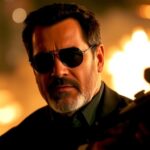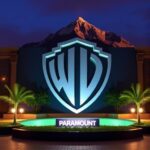Sundance Film Festival 2026 Honors Late Founder Robert Redford with Legacy Screenings in Final Park City Edition
In a heartfelt nod to the visionary who birthed one of cinema’s most influential platforms, the Sundance Film Festival has announced a comprehensive tribute to the late Robert Redford for its 2026 edition. This special programming, featuring rare film screenings of Redford’s early independent works and meticulously restored classics, will serve as a poignant capstone to the festival’s storied run in Park City, Utah, before its anticipated relocation. Festival organizers revealed the plans on Wednesday, emphasizing Redford’s indelible legacy in fostering independent storytelling amid an era dominated by blockbuster spectacles.
The announcement comes at a pivotal moment for Sundance, which Redford co-founded in 1981 as a haven for emerging filmmakers. With Redford’s passing in late 2024 at the age of 88, the 2026 event—slated for January 22 to February 1—will weave his personal and professional journey into the festival’s fabric, drawing crowds to Park City‘s snowy slopes for what many are calling a “farewell symphony” to both the icon and the iconic venue.
“Robert wasn’t just a founder; he was the soul of Sundance,” said festival director Tabitha Jackson in a statement. “These film screenings and events will celebrate his legacy, reminding us why independent cinema matters now more than ever.” The tribute aligns with Sundance’s evolution, as economic pressures and logistical challenges prompt a shift away from Park City, potentially to a more centralized urban hub like Los Angeles or Denver, though details remain under wraps.
Redford’s Vision Takes Center Stage: Curating a Legacy of Indie Innovation
At the heart of the 2026 Sundance Film Festival tribute lies a curated selection of screenings that trace Robert Redford‘s evolution from Hollywood heartthrob to indie cinema champion. Organizers have promised an unprecedented deep dive into Redford’s directorial debut, Ordinary People (1980), which not only earned him an Academy Award for Best Director but also foreshadowed his commitment to raw, character-driven narratives. This film, a stark exploration of family trauma, will open the legacy series, setting a tone of introspection for attendees navigating their own creative journeys.
Beyond Ordinary People, the program spotlights Redford’s lesser-known independent ventures, including restored prints of A River Runs Through It (1992) and Quiz Show (1994). These selections underscore Redford’s legacy in blending literary adaptations with social commentary, themes that resonated deeply during his lifetime. Festival archives reveal that Redford personally selected early Sundance projects like Sex, Lies, and Videotape (1989), which launched Steven Soderbergh’s career; a restored 35mm screening of this breakthrough will highlight how Redford’s intuition shaped modern indie cinema.
Statistics from the Sundance Institute paint a vivid picture of Redford’s impact: Over 40 years, the festival has premiered more than 20,000 films, with over 70% going on to wider distribution. Redford’s hands-on involvement—mentoring talents like Quentin Tarantino and the Duplass brothers—created a ripple effect, generating an estimated $2.5 billion in economic value for Park City alone through tourism and local business booms. “He saw potential where others saw risk,” noted indie producer Christine Vachon, a Sundance alumna. “These film screenings aren’t just retrospectives; they’re blueprints for the next generation.”
The curation process involved collaboration with the Sundance Institute’s preservation team, who spent months digitizing and restoring footage from Redford’s personal collection. One highlight is a never-before-seen workprint of his 1970s short film experiments, offering glimpses into the actor-director’s formative years. This archival effort aligns with broader industry trends, as streaming giants like Netflix invest in restorations to combat content fatigue—Sundance’s initiative could inspire similar tributes at other festivals like Cannes or Toronto.
Rare Gems Unearthed: Spotlight on Redford’s First Indie Film and Hidden Treasures
One of the most anticipated elements of the 2026 Sundance Film Festival is the world premiere screening of a restored version of Robert Redford‘s first foray into independent filmmaking, Little Fauss and Big Halsy (1970). This gritty road movie, co-starring Redford as a motorcycle racer alongside newcomers like Michael J. Pollard, was a commercial underdog that Redford championed as a passion project. Long overlooked due to its distribution woes, the film’s revival—complete with a new 4K transfer—promises to reframe Redford’s early career as a bridge between studio gloss and indie grit.
Curators describe Little Fauss as a “lost chapter” in Redford’s legacy, capturing the countercultural spirit of the era with its themes of rebellion and camaraderie. Produced on a shoestring budget of $900,000, it grossed modestly but influenced later works like Easy Rider. Attendees in Park City will experience it in the historic Egyptian Theatre, where Redford himself introduced films during Sundance’s nascent years. “This screening feels like uncovering buried treasure,” said restoration expert Jane Fonda, Redford’s longtime collaborator. “It’s Redford unfiltered, raw, and revolutionary.”
Complementing this are showcases of restored classics such as The Horse Whisperer (1998) and The Legend of Bagger Vance (2000), both directed by Redford and emphasizing his affinity for American landscapes—a motif that mirrors Park City‘s rugged allure. These film screenings will include post-show Q&As with surviving cast and crew, fostering intimate connections between past and present. For instance, a panel on Quiz Show will feature Ralph Fiennes discussing Redford’s meticulous direction, drawing parallels to today’s ethical dilemmas in media.
To enhance accessibility, Sundance plans virtual components, streaming select film screenings globally via its online platform, which saw 1.2 million views during the 2023 hybrid event. This hybrid model, born from pandemic adaptations, ensures Redford’s legacy reaches beyond Park City‘s physical confines, potentially boosting international attendance by 25% as projected by festival metrics.
Park City’s Last Hurrah: Emotional Ties to Sundance’s Mountain Home
As the Sundance Film Festival prepares for its final bow in Park City, the 2026 tribute to Robert Redford amplifies the emotional stakes of this transition. For over four decades, the alpine town has been synonymous with Sundance, transforming from a quiet ski destination into a global cinema mecca. The festival injects $180 million annually into Utah’s economy, supporting 5,000 jobs and drawing 120,000 visitors who pack venues like the Eccles Theater and Main Street sidewalks.
Redford’s personal connection to Park City runs deep; he purchased nearby land in the 1960s, envisioning a creative retreat that evolved into the Sundance Resort. His legacy here is tangible—from the Redford Center for Environmental Studies to artist residencies that have nurtured talents like Boots Riley and Lulu Wang. The 2026 events will include a ceremonial hike to Redford’s favorite trailhead, symbolizing the festival’s roots in nature-inspired storytelling.
Local voices echo the bittersweet sentiment. “Park City owes its renaissance to Bob,” said Mayor Nann Worel. “These film screenings will be our way of saying thank you, even as we brace for change.” The relocation, driven by rising costs and infrastructure strains—such as limited housing for the 100,000+ daily attendees—marks a new chapter. Speculation points to a move that could consolidate operations, reducing the festival’s carbon footprint by 40% through urban efficiencies, per institute reports.
Yet, the farewell isn’t without controversy. Filmmakers worry that leaving Park City‘s intimate, community-driven vibe could dilute Sundance’s indie ethos. A petition circulated by alumni calls for hybrid retention of mountain events, garnering 10,000 signatures. Organizers counter that innovation, much like Redford’s vision, demands adaptation: “We’re honoring the past while building the future,” Jackson affirmed.
Interactive Tributes and Community Echoes: Beyond the Screen
The Sundance Film Festival 2026 legacy program extends far beyond film screenings, incorporating interactive events that invite reflection on Robert Redford‘s multifaceted influence. A centerpiece is the “Redford Dialogues,” a series of live panels and workshops in Park City‘s conference halls, featuring A-listers like Sydney Pollack’s mentees and environmental activists inspired by Redford’s conservation work.
One standout event is a multimedia installation at the Sundance Mountain Resort, blending archival footage, interactive timelines, and VR experiences of Redford’s film sets. Visitors can “step into” scenes from Butch Cassidy and the Sundance Kid (1969), Redford’s breakout that ironically predated his indie pivot. Quotes from Redford’s memoirs, such as “Cinema should challenge, not comfort,” will anchor discussions on AI’s role in storytelling—a timely topic as tools like generative scripts disrupt traditional filmmaking.
Community engagement ramps up with free public screenings in Park City parks, projected on giant LED walls under the stars. These will include youth programs, where local high schoolers analyze Redford’s techniques, fostering the next wave of creators. Statistics show Sundance’s outreach has empowered 5,000 underrepresented voices since 2010, with Redford’s legacy emphasizing diversity—evident in premieres like Moonlight (2016).
Philanthropic tie-ins include auctions of Redford memorabilia, with proceeds funding the institute’s $50 million endowment for emerging artists. “It’s about perpetuating his generosity,” said board member Sterling Beckwith. Global partners like the Tribeca Festival are co-sponsoring, ensuring the tribute’s resonance echoes worldwide.
Looking forward, the 2026 events signal Sundance’s resilience post-Redford and post-Park City. As the festival relocates, it aims to expand its digital footprint, targeting 2 million online engagements annually. This evolution honors Redford’s belief in accessible art, positioning Sundance as a beacon for indie cinema in a fragmented media landscape. With whispers of star-studded premieres and policy forums on film funding, the 2026 edition promises not just remembrance, but reinvention—ensuring Robert Redford‘s legacy endures in every frame and festival to come.








